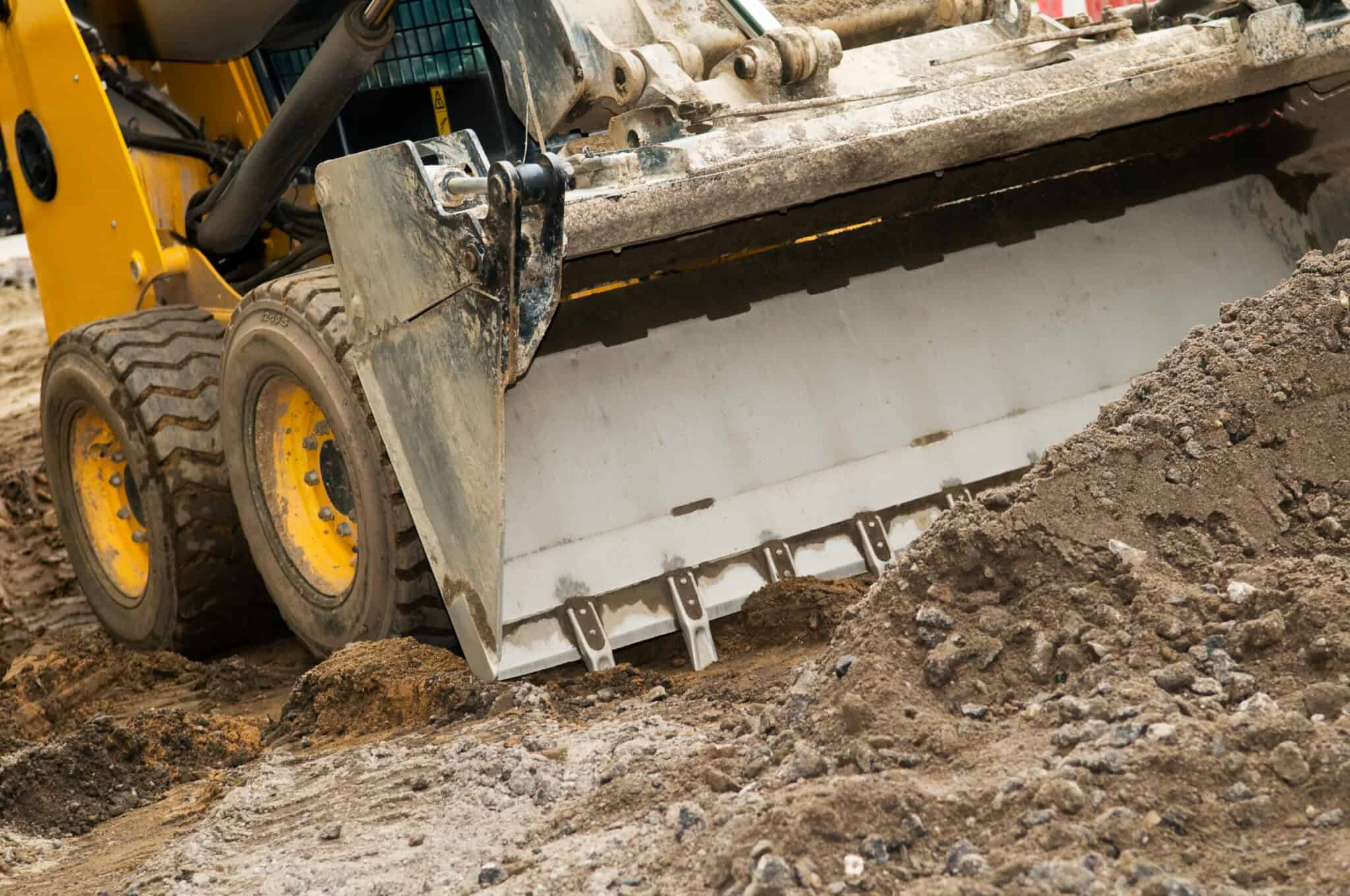
LIST YOUR FREIGHT
CONNECT WITH A CARRIER
SIT BACK & RELAX
Skid Steer Loader Transport - The Ultimate Guide
Tips, Tricks, and Things You Should Know.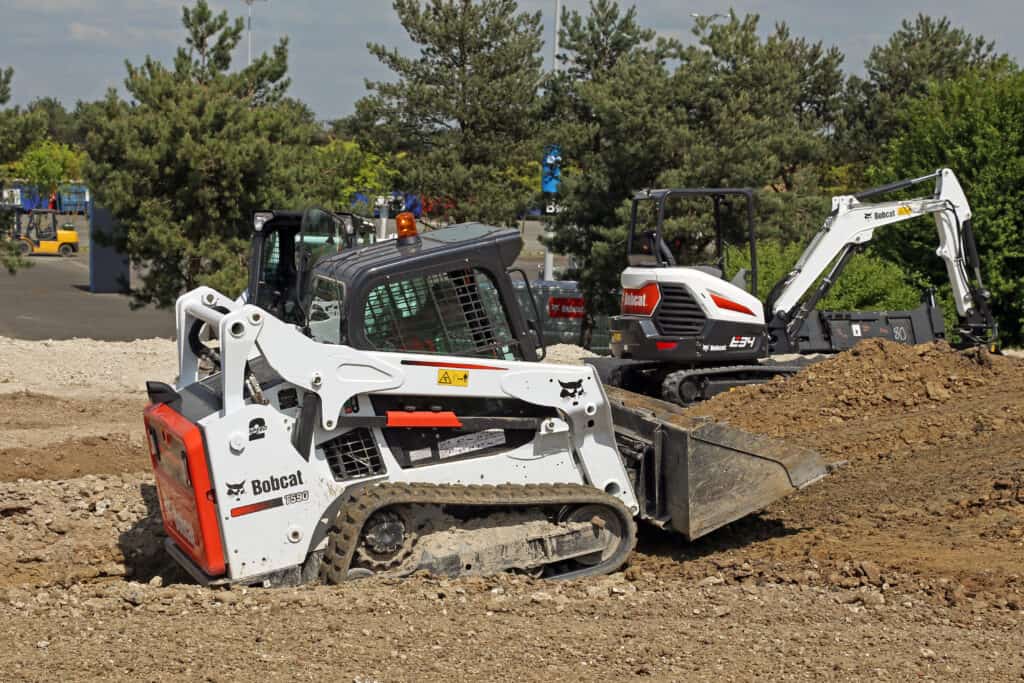
Transporting heavy equipment is a complex task. Preparation, communication, compliance with local, state, and federal regulations, and strict safety procedures are musts for any machine going from Point A to Point B. Many individuals find that it is better to hire a professional to move their equipment. This is especially true when moving machines over long distances, tricky routes, and through populated areas. It can be difficult and time-consuming to find the right transport provider to handle your load. Luckily, VeriTread is here for you! Our service connects shippers with qualified transport companies around the country who have extensive experience in transporting heavy equipment along with other heavy machinery and oversize load. Still, it’s always best to know everything about the process, should any surprises arise. We have prepared a fundamental guide for shipping a skid steer loader. Let’s dive into what it takes to safely and legally transport heavy equipment from one place to another.
Preparing your Skid Steer for Transport
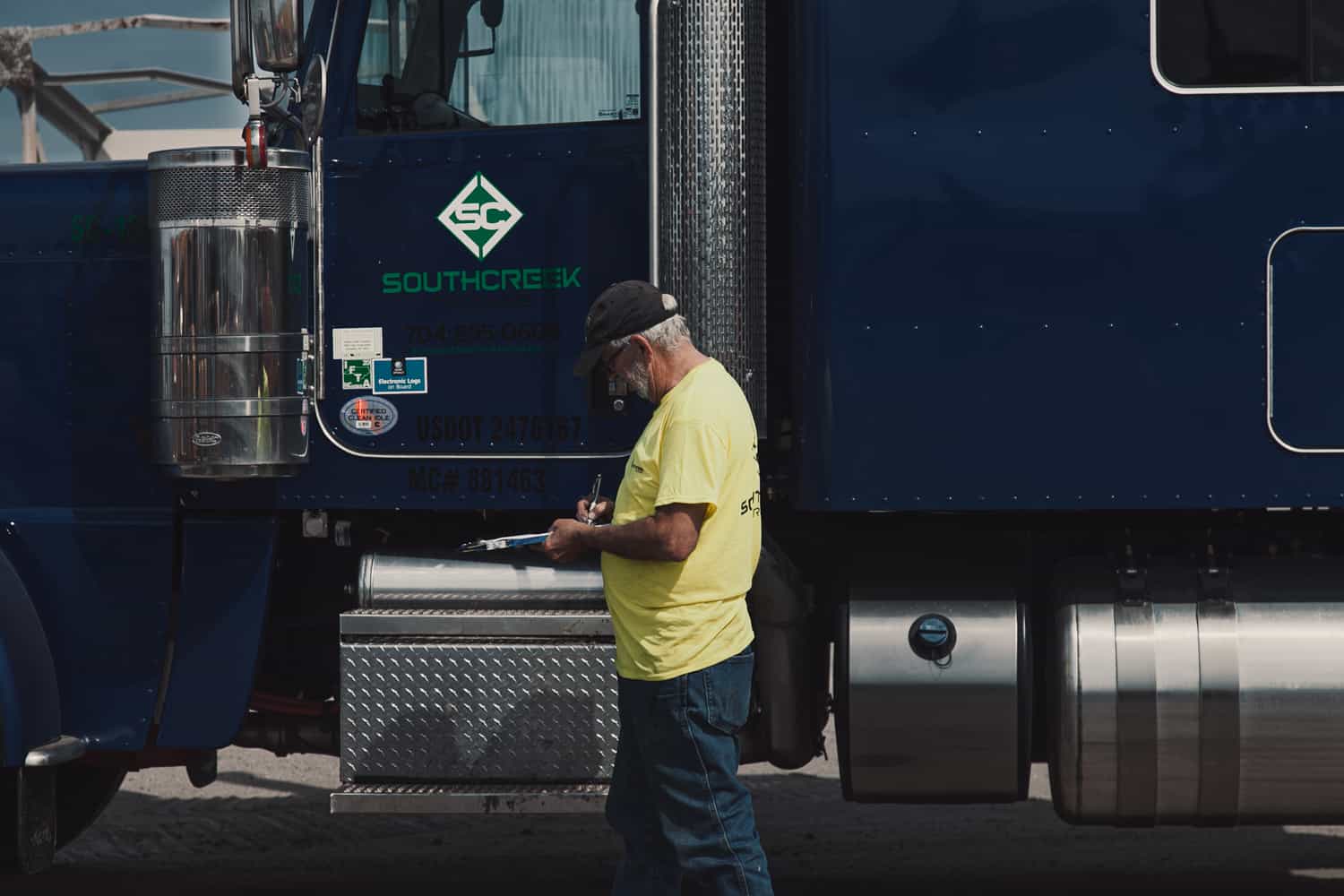
Loading & Securing an Skid Steer Loader Safely
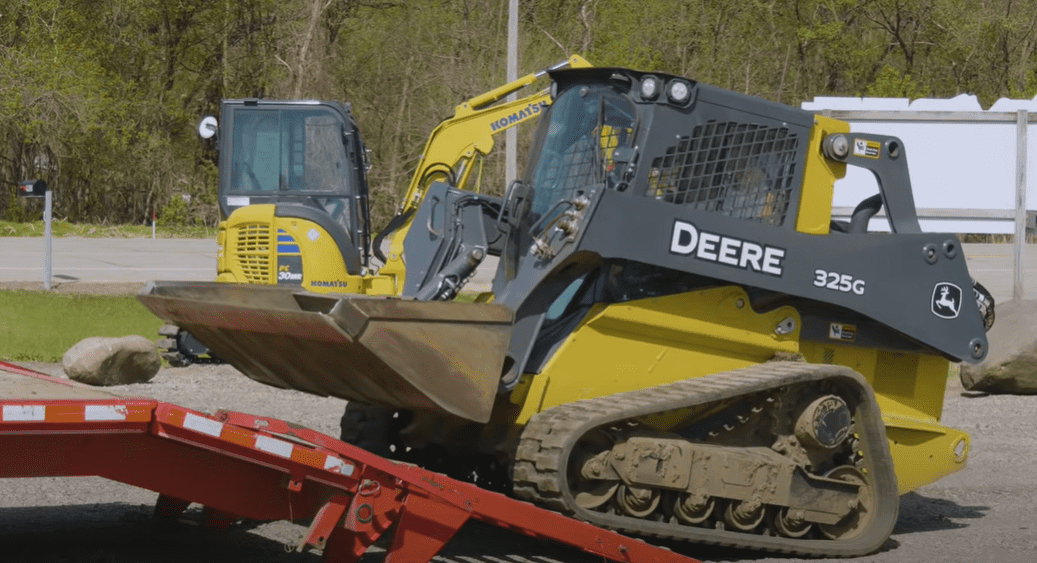
All equipment attachments, work tools, and other accessory equipment must be lowered and secured before transportation. Retract booms and buckets and secure them in place. Secure equipment components (lock all doors, covers, tailgates, and articulation points). Also, make sure the machine transmission is immobilized and brakes are locked. For additional protection to your equipment, you may choose to cover it with a tarp or wrap it with shrink wrap. This protects the equipment from dirt, debris, and moisture on the roadways. For equipment with a smokestack, be sure to cover it so debris cannot enter. Use ample & appropriate securing devices (chains, binders, straps, & anchors). Choose appropriate attachment points on the machine and trailer.
Once the load is secured, check everything a second time. It can be helpful to have a safety check system in place where multiple people check the load, instead of relying on a single person.
To make sure the driver has a clear view of what’s going on around them. The placement of an skid steer loader should also allow free movement of the driver and should not obstruct them from exiting the vehicle or accessing any necessary vehicle components or accessories. This ensures the driver can safely transport the machinery and keeps your company compliant with DOT regulations.
Check out a good securement video from Heavy Metal Learning. It covers tips. tricks, do's & don'ts for how to load a skid steer.
Transporting an Skid Steer Loader Safely
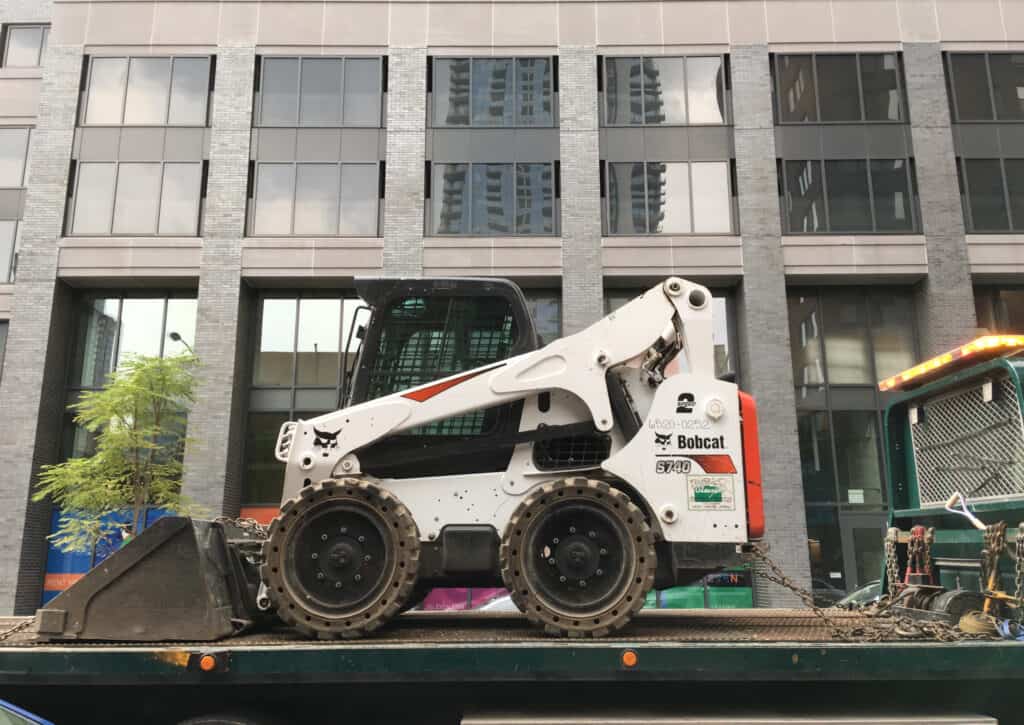
Heavy loads can be very dangerous in rush hour traffic in big cities. Take time before your trip and map out a route (and time) that avoids areas of construction or heavy congestion on the roadways--you'll thank yourself later! Try to avoid toll roads, low-hanging bridges, or any other interruptions or delays that could slow transportation. The best routes have the least amount of bridges, turns, starts, stops, and difficult terrain.
You also need to be sure that the roads along your route can handle the weight, height, and width of the load. It is very dangerous to assume that all roads can handle the weight of a heavy load. If the area is unfamiliar, then we strongly suggest you drive the route in a smaller vehicle first to identify areas of concern.
Heavy load securement requires check-ins and inspections while on the road, especially when traveling long distances. Industry safety standards recommend the following as inspection benchmarks while heavy cargo is en route:
- Once during the first 50 miles of transport.
- Once every 150 miles or once every 3 hours — whichever comes first for long-distance hauls.
- At every change of duty or change of driver station. Have the new driver run a full inspection, then document that inspection in a transport log.
Delivering & Safely Unloading an Skid Steer Loader
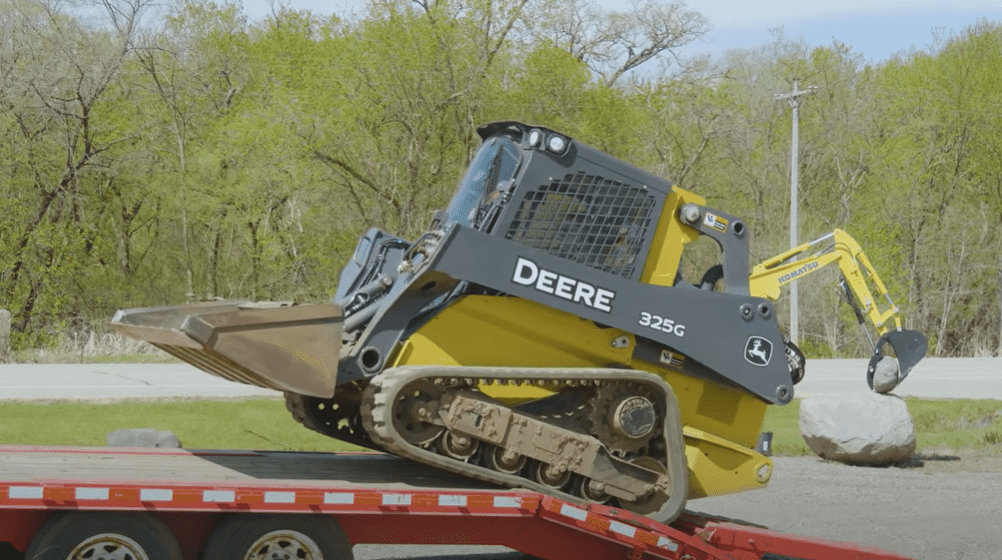
Before the transportation vehicle even arrives, take the time to review and clear the designated unloading area in the receiving yard. Just as you pay attention to this during the loading phase, wet and muddy ramps and uneven unloading ground make this part of the operation much harder than necessary. Line the ramps up with the rear of the trailer bed as methodically as possible, taking time to match joints and eliminate any gaps between the trailer and the ramp. Once the machinery begins backing up, there will be no time to reposition.
With everything in place, conduct a final condition survey. Look over the equipment’s tires and hitches to ensure their health. Review roles with personnel, appointing a spotter and an equipment operator just like during the loading process and before you begin breaking down the chain tie points. You’ll also want to do a brief survey on the condition of the tie-downs themselves before their release. It is highly unsafe to undo straps and chains if the load has shifted, even minutely. If this is the case after performing a walk-through, you and the operators will have to draw up a custom unloading plan.

